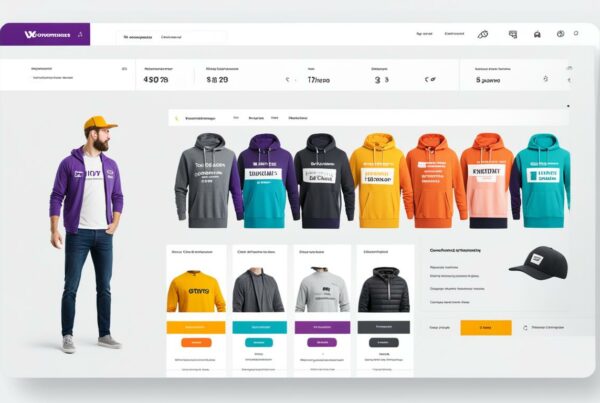Search Engine Optimisation, usually abbreviated to SEO, refers to the science and art of getting your website noticed among the 1.94 billion sites that exist in the world today.
Without some sort of system in place to sort sites into categories and rank them according to relevance, it would be impossible to navigate the web and find what we needed, unless we knew a site’s URL before we started.
Donald, Where’s Your Trousers?
Imagine you are looking for a pair of snappy tartan trousers. You’ve heard there are some at a market nearby, at a price and quality the high street stores cannot match. When you get to the market, you discover the entire population of China trading, each man, woman and child with a stall of their own, all randomly scattered with no order whatsoever. How are you going to find what you want and be sure the price and quality are good?
What would be even worse would be if you wanted a slice of that market share and you set up a stall, selling your world-beating products. If only people could find your shop, you know they would love to buy from you. But alas, your sales message is drowned out in the chaos and confusion.
Who’s in Charge Around Here?
But what if some kind of Market Superintendent could come along to arrange the stalls by category and mark out those with dodgy credentials or unscrupulous sales patter? Then you might stand a chance!
That is more or less the role of Search Engines. Actually, they are probably more like personal shoppers, going into the market and finding what you’re looking for on your behalf, but we’ll stick with the Market Superintendent analogy for now.
SEO is the Market Superintendent.
The largest search engine in the Western world is, of course Google, which largely governs access to customers online. And Google is conscientious. Very. It scrupulously investigates every aspect of every website you might visit.
Any website that Google doesn’t like finds itself demoted in the search result rankings. Remembering that around 75% of people will never scroll past the first page on a Google search, it is crucial to score highly on Search Engine Results Pages (SERPs). This is achieved via SEO – Search Engine Optimisation.
How Can We Curry Favour?
So, we need to score points with Google. We do that with SEO: doing what makes Google happy and avoiding what makes it cross. How?
Off-page SEO
Google’s first concern is about how popular a site is. If lots of other people already like it, then maybe you will, too.
If Google notices that a lot of other websites and social media pages have links to your website, it deduces that other people like your site and you get respect in the form of instant promotion in SERPs. However, those external links, known as backlinks, should come from sites that Google has already ranked as good quality.
This is very important: in the old days, people would use Black Hat SEO techniques, to trick Google into promoting their websites. Stratgems included filling up online directories with thousands of URLs, setting up meaningless mutual links, that had no relevance or value with other websites and so forth.
Google is very sophisticated nowadays and not only will these tricks not work, they will result in penalties – basically, Google will make you disappear!
There are genuine directories, such as Chambers of Commerce or Business Gateway listings, which can benefit your SEO if you are included.
Good quality or natural links will develop when there is a genuine reason for a page to link to yours, for example, people subscribing to your blog, or clicking through to your site from a guest blog you have written on another site.
Off-page SEO relates to and overlaps with Social Media Marketing, which is another fascinating story in its own right.
On-page SEO
This deals with the stuff your website developer should be doing for you: optimising the HTML source code of your website pages, choosing the right tags, etc., to achieve a better position in SERPS by answering the most common questions asked by readers searching for your goods or services.
The science is simple: tools exist for your developer to reverse engineer the questions most asked by people looking for what you are selling. For example, if you are a bricklayer, you could visit the site Answerthepublic.com, enter ‘brick wall’ into the search box and you will be presented with a list of the top 100 questions people ask on that subject. If your site can answer the most popular questions on the list, you will get lots of visitors.
The developer can include keywords derived from the list of questions into page tags on your site and you or your copywriter can address them in the content on the pages themselves.
Content
ON-page SEO also covers fresh, rich content on the pages. There are two main aspects to this: content that is engaging to keep people reading and minimise your ‘bounce rate’ (see below) and authoritative to establish you as an authority in your field, thus creating customers and links (see above). This is a subject in itself: Content Marketing.
Graphics
Graphics, in the form of illustrations, photos or infographics, serve to break up large chunks of text and keep readers on your page for longer. In addition, each graphic that you put on a page provides an opportunity for descriptive text tags, which are read by Google and help drive visitors to your site.
The use of graphics leads us into the topic of Technical SEO…
Technical SEO
It might feel that Google is perhaps too conscientious at times. It judges websites not only on all the on-page and off-page criteria above, but also on how long it takes to load each page. A difference of one second makes a big difference.
A major factor in this is images: how many you have on your page, their specification and file size. They need to render quickly: large file-size images slow down websites and Google doesn’t like it.
Every second counts
We are all guilty of impatience with a slow-loading page, and Google knows it. Not only that, they’ve quantified it exactly. According to their own statistics, the “bounce rate” (the user/surfer getting fed up and trying another site instead) increases:
From 1 second to 3 seconds – bounce rate increases by 32%
From 1 second to 5 seconds – bounce rate jumps by 90%
From 1 second to 6 seconds – bounce rate increases by 106%
From 1 second to 10 seconds – bounce rate increases by a massive 123%
So, if you or your website developer is sloppy with the images on your website, it could cost you dearly in visitors. Graphics and photos should be defined and clear enough to view on a desktop screen, but with a small file size, optimized for online viewing.
Security
Plays a critical role in technical SEO.
Your website must have an SSL certificate in order to get an HTTPS prefix for your URL. e.g https://precisionpresentation.com/). HTTPS reassures site visitors and Google that that your website is secure, encrypted and protected from cyber-attacks.
Google used to reward SSL-certificated websites with a green padlock and a Secure label in the URL bar. HTTPS sites are now considered so much the norm that the label has been removed and the padlock has now faded to black, as part of its phased obsolescence. Now, any site without an SSL certificate is conspicuously flagged up as unreliable and vigorously demoted in SEO rankings.
Want to know more about SEO? Give us a ring or email us on [email protected]
Internet Creation Ltd. specialises in Web Design & Development, Graphics Design and Digital Marketing (SEO & PPC). For more information on how we can help your business, email [email protected].







